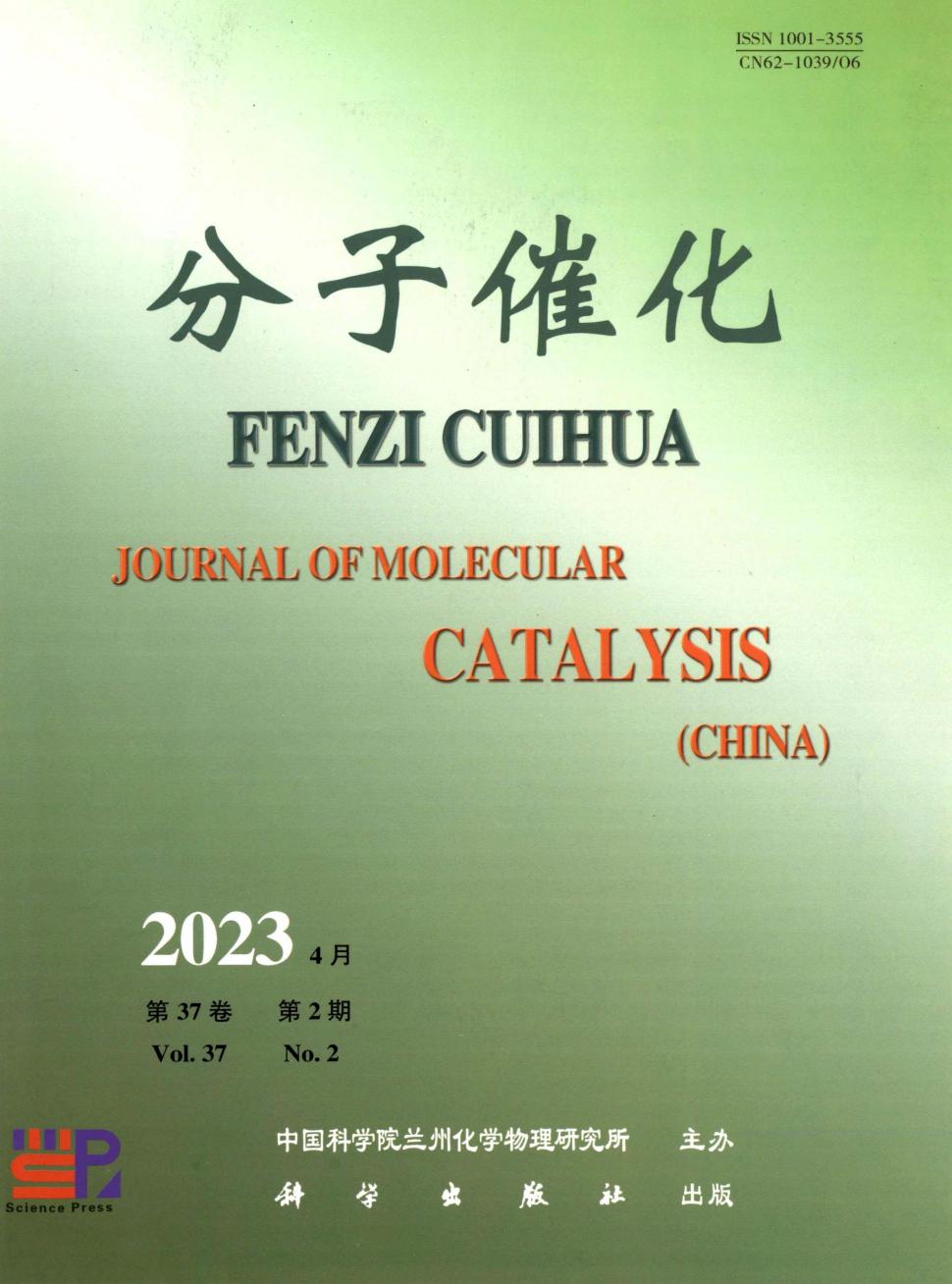氧化铌促进的Rh/SiO2催化剂上CO的化学吸附和反应性的FTIR研究
Q4 Chemical Engineering
引用次数: 10
摘要
通过在表面低价Nbn +离子上锚定纳米尺寸的Rh颗粒,制备了(Rh + Nb)/SiO2催化剂。与Rh/SiO2相比,这些材料具有以下特点:化学吸附氢和碳氧化物的低Rh表面覆盖率;在1704和1652 cm−1处,CO的线性吸收带出现高频偏移,C键和o键CO出现两条吸收带。暴露于H2时,表面羰基的稳定性依次增加:Rh-CO-Nbn + <Rh-CO≤Rh2(CO) <Rh + (CO) 2。讨论了C键和o键CO配合物在过渡元素氧化物促进的负载铑催化剂上合成气转化中的可能作用。本文章由计算机程序翻译,如有差异,请以英文原文为准。
FTIR studies of CO chemisorption and reactivity on Rh/SiO2 catalysts promoted by niobium oxide
(Rh + Nb)/SiO2 catalysts were obtained by anchoring of nanometer size Rh particles on surface low-valent Nbn + ions. These materials exhibit the following specific features compared to Rh/SiO2: a low Rh surface coverage by chemisorbed hydrogen and carbon oxide; a high-frequency shift of linear CO absorption band and appearance of two absorption bands of a C- and O-bonded CO at 1704 and 1652 cm−1. On exposure to H2, the stability of surface carbonyls increases in the sequence: Rh-CO-Nbn + < Rh-CO ≤ Rh2(CO) < Rh+(CO)2. The possible role of C- and O-bonded CO complexes in the conversion of syngas on supported rhodium catalysts promoted by transition element oxides is discussed.
求助全文
通过发布文献求助,成功后即可免费获取论文全文。
去求助
来源期刊

分子催化
Chemical Engineering-Catalysis
CiteScore
1.50
自引率
0.00%
发文量
2959
期刊介绍:
Journal of Molecular Catalysis (China) is a bimonthly journal, founded in 1987. It is a bimonthly journal, founded in 1987, sponsored by Lanzhou Institute of Chemical Physics, Chinese Academy of Sciences, under the supervision of Chinese Academy of Sciences, and published by Science Publishing House, which is a scholarly journal openly circulated both at home and abroad. The journal mainly reports the latest progress and research results on molecular catalysis. It contains academic papers, research briefs, research reports and progress reviews. The content focuses on coordination catalysis, enzyme catalysis, light-ribbed catalysis, stereochemistry in catalysis, catalytic reaction mechanism and kinetics, the study of catalyst surface states and the application of quantum chemistry in catalysis. We also provide contributions on the activation, deactivation and regeneration of homogeneous catalysts, solidified homogeneous catalysts and solidified enzyme catalysts in industrial catalytic processes, as well as on the optimisation and characterisation of catalysts for new catalytic processes.
The main target readers are scientists and postgraduates working in catalysis in research institutes, industrial and mining enterprises, as well as teachers and students of chemistry and chemical engineering departments in colleges and universities. Contributions from related professionals are welcome.
 求助内容:
求助内容: 应助结果提醒方式:
应助结果提醒方式:


